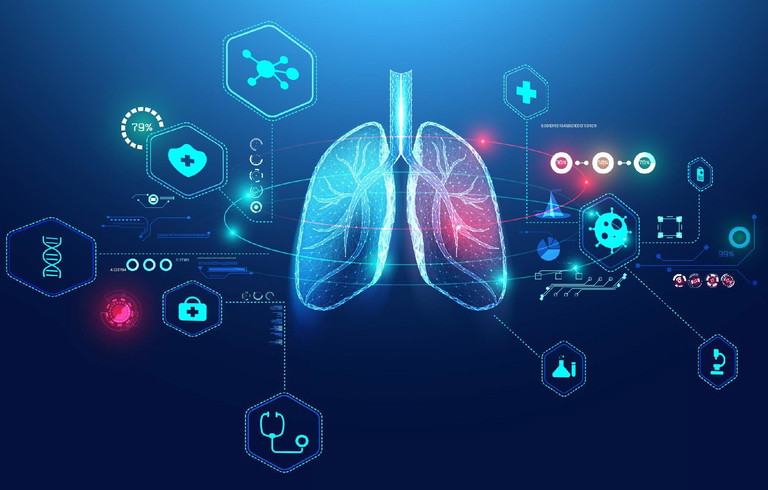Discovery & Development: Predictive In Vitro Tech
The increasing pivotal role of predictive in vitro technologies in drug discovery
How will innovative human-centred in vitro testing strategies contribute to accelerating the delivery of safer and more effective therapies to patients without, or with minimal, use of animal models?
Mike Nicholds at Newcells Biotech
A paradigm shift is occurring in preclinical drug development because of a growing awareness of the limitations of animal models in accurately predicting human responses. This is emphasised by the publication of the US Food and Drug Administration’s (FDA’s) Roadmap to Reducing Animal Testing in Preclinical Safety Studies, which is intended as a strategic guideline to increase the commitment to adopt scientifically validated new approach methodologies (NAMs) including advanced in vitro systems.1 The evolution toward predictive systems more relevant to humans is at the centre of this initiative pushing for models that account for complex tissue responses, immune interactions and toxicological profiles. Complex in vitro models therefore hold a key position in this transformation by providing high-fidelity platforms from human tissues to address key regulatory endpoints, such as nephrotoxicity and absorption.
Preclinical drug development has long relied on animal models to evaluate the safety and efficacy of new therapeutic compounds. However, the translational gap between animal data and human outcomes has become increasingly apparent, with the success rates of drugs that enter clinical development remaining stubbornly low at 8-23%.2 One of the primary reasons for failure is poor efficacy and safety data, with numerous clinical failures attributed to poor predictive validity of animal studies.3 In response, regulatory agencies, scientists and industry stakeholders are advocating for a transition towards more human-relevant testing platforms.
The publication of the FDA’s Roadmap to Reducing Animal Testing in Preclinical Safety Studies marks a significant milestone in this transition.1 The roadmap outlines strategic goals to facilitate the adoption of NAMs, which encompass a broad spectrum of innovative tools – including advanced microtissue in vitro models and computational in silico approaches – all designed to reflect human biology more accurately, providing human-relevant data for safety risk assessment alongside detailed mechanistic insights. The roadmap and similar initiatives worldwide underscore the strategic importance of this transition. These technologies not only align with the principles of the 3Rs (Replacement, Reduction and Refinement of animal use) but also promise to accelerate drug development whilst improving patient safety.
Regulatory drivers for change
The FDA’s Roadmap to Reducing Animal Testing in Preclinical Safety Studies marked a major milestone for the industry, and a pivotal regulatory endorsement of NAMs. The roadmap emphasises the need for scientifically validated alternatives that can meet or exceed the predictive capacity of animal models for key regulatory endpoints, such as hepatotoxicity, nephrotoxicity and immunogenicity.
European regulators, including the European Medicines Agency and the UK Medicines and Healthcare products Regulatory Agency, have also previously issued similar guidance, encouraging the integration of advanced in vitro and computational models into regulatory submissions.4 Similarly, the Organisation for Economic Co-operation and Development has developed guidelines for the validation and use of in vitro methods in chemical safety assessment.5
These regulatory initiatives are fostering a global ecosystem supportive of innovation in preclinical testing, with a clear mandate to improve in vitro model predictivity and reduce reliance on animal models.
The evolution of in vitro models in drug safety assessment
Traditional in vitro models
In vitro models have long been used as alternatives or complements to animal testing. Early models typically involved two-dimensional (2D) monolayer cultures of immortalised cell lines or primary cells. While these systems enabled high-throughput screening and mechanistic studies, they fell short in replicating the complex architecture and function of human tissues due to a lack of tissue-specific microenvironments and often a rapid loss of differentiated functions. While 2D in vitro assays have provided valuable insights into cytotoxicity, genotoxicity and basic pharmacology, laying the groundwork for more sophisticated models, their predictivity is insufficient for new generation risk assessment.

The emergence of NAMs and advanced in vitro models
NAMs represent a paradigm shift in the sophistication of animal model alternatives, encompassing not only improved in vitro systems but also computational and integrated approaches. The rapid advances in technologies such as induced pluripotent stem cells (iPSCs), organoids, bioprinting and organ-on-a-chip, in parallel with AI-based analysis, has revolutionised in vitro models. Emphasising key areas such as human relevance to better mimic human biology, increased complexity (integration of more cell types into more complexes 3D structures under dynamic culture conditions, immune components), improved scalability (compatibility with high-throughput and high content imaging techniques) and seamless data integration (combing omics data from multiple sources), NAMs are essential tools for modern toxicology and risk assessment.6,7
Key features of NAMs:
• Human Relevance: use of human-derived cells and tissues to better mimic human biology
• Complexity: incorporation of 3D structure, multiple cell types and dynamic culture conditions
• Scalability: compatibility with high-throughput and high-content screening technologies
• Data Integration: ability to combine data from multiple sources (in vitro, in silico, omics).
Computational modelling: bridging in vitro data to human outcomes
While microtissues and 3D models offer biologically relevant data, translating the complexity of these models into clinically meaningful predictions requires sophisticated computational tools. Physiologically based pharmacokinetic (PBPK) modelling and in vitro to in vivo extrapolation (IVIVE) are central computational approaches that quantitatively link in vitro concentration-response data to expected human systemic exposures.
PBPK models simulate the absorption, distribution, metabolism and excretion of compounds across human organ systems, incorporating physiological parameters such as blood flow rates, tissue volumes and enzyme activities. When combined with microtissue-derived toxicity thresholds, PBPK models enable the estimation of safe exposure margins and prediction of target organ concentrations, thereby enhancing risk assessment accuracy. Recent studies continue to show the benefits of approaches combining both in vitro techniques and in silico modelling, exemplifying how next generation risk assessment and NAMs address pressing relevant regulatory questions without using animals.8 IVIVE leverages these models to reverse-translate in vitro effective concentrations to equivalent human doses, facilitating the identification of potential toxic effects and doses before clinical trials. This approach has been successfully applied in cardiac safety assessment, where 3D human induced pluripotent stem cells-derived cardiac microtissues were used alongside PBPK modelling to predict proarrhythmic risk of drugs with high precision, demonstrating close alignment with known clinical outcomes.9
Combining microtissues, advanced analysis and computational approaches
Along with the advances in cell biology and in vitro modelling, the emergence of analytical technologies such as transcriptomics, metabolomics and imaging means today’s drug development scientists can interrogate complex 3D in vitro microtissues to uncover detailed mechanistic insights on how a new drug is affecting human tissues.10 Combined with AI analysis of high content imaging outputs and automated laboratory workstations, these platforms have the potential to challenge the existing approaches to drug discovery and crucially improve overall lab-to-clinical-to-market efficiency.
Challenges and future perspectives
While the field is advancing rapidly, some challenges remain. Standardisation of organoid and microtissue models across laboratories to facilitate comparability will be critical to streamline regulatory acceptance.11 Additionally, computational models require further validation on the methods to integrate in vitro data. Emerging strategies include the use of machine learning to enhance model predictions and the development of multi-organ microtissue platforms including immune components that better mimic human physiology. Continued collaboration between biologists, engineers and computational scientists will be essential to overcome current limitations and establish robust workflows for preclinical safety assessment.
In summary, the combination of advanced in vitro microtissues with pan-omics and computational modelling represents a transformative advance in preclinical drug discovery and development. This integrative strategy enhances the biological relevance and quantitative rigour of safety assessments, accelerating the delivery of safer therapeutics while aligning with the goal of reducing animal testing.
References
- Visit: fda.gov/media/186092/download
- Schuhmacher A et al (2025), ‘Benchmarking R&D success rates of leading pharmaceutical companies: an empirical analysis of FDA approvals (2006–2022)’, Drug Discovery Today, 30(2), 104291
- Loewa A et al (2023), ‘Human disease models in drug development’, Nat Rev Bioeng, 1, 545-559
- Visit: ema.europa.eu/en/human-regulatory-overview/research-development/scientific-guidelines
- Visit: oecd.org/en/publications/guidance-document-on-good-in-vitro-method-practices-givimp_9789264304796-en.html
- Nair D G et al (2025), ‘Advanced In Vitro Models for Preclinical Drug Safety: Recent Progress and Prospects’, Curr Issues Mol Biol, 47, 7
- Sinha K et al (2023), ‘Applications of Deep Learning in Predictive Drug Toxicological Studies’, Chem Res Toxicol, 36(8), 1174-1205a
- Baltazar M T et al (2025), ‘Making safety decisions for a sunscreen active ingredient using next-generation risk assessment: Benzophenone-4 case study’, ALTEX
- Daley M C et al (2024), ‘In vitro to in vivo extrapolation from 3D hiPSC-derived cardiac microtissues and physiologically based pharmacokinetic modelling to inform next-generation arrhythmia risk assessment’, Toxicol Sci, 201(1), 145-157
- Jose A et al (2024), ‘Integration of pan-omics technologies and three-dimensional in vitro tumor models: an approach toward drug discovery and precision medicine’, Mol Cancer, 23, 50
- Stresser D M et al (2024), ‘Towards in vitro models for reducing or replacing the use of animals in drug testing’, Nat. Biomed. Eng, 8, 930-935

Dr Mike Nicholds is CEO and co-founder at Newcells Biotech. Mike’s career spans more than 30 years in life sciences, where he has worked for a range of companies in senior management and leadership roles. Having trained as a microbiologist, Mike began his career during the early years of the biotechnology industry, working in the technical field before transitioning into sales, marketing, business management and executive director roles. His passion is in translating life sciences into innovative products including biocatalysts, biologics, vaccines and stem cells, working for and advising large, medium and start-up companies including ICI, Zeneca, Avecia Biologics, Chirex and spin-out investor-backed enterprises.